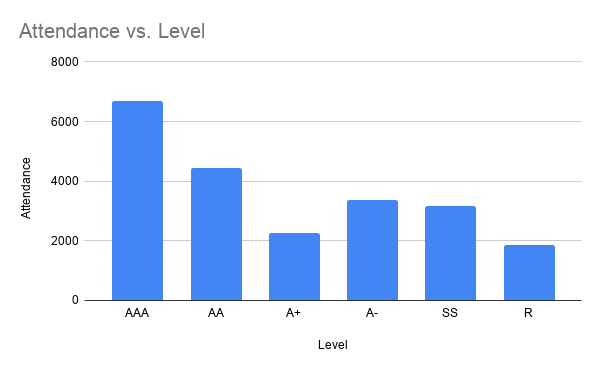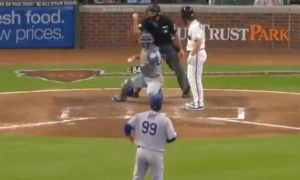Questions About the 42 Minor League Team Cut List (Part One)

About 20 years ago, the US Mint began circulating specially designed quarters- one for each state. I was 16 at the time, and as a gift, a relative gave me a special poster where I could keep and display these quarters. I tried to collect them all but didn’t make it very far. Eventually, I realized they were just quarters after all, worth 25 cents like any other. I emptied the poster and spent them on who-knows-what before my collection could expand west of the Mississippi River. I didn’t see the point in collecting something just to have it when it really didn’t enhance my life in any way.
When an incomprehensibly wealthy entity, such as Major League Baseball, tries to save a few million dollars, it’s no different than collecting state quarters. To scale, a million dollars to a billionaire owner is about the same as a commemorative quarter to a teenager with a part-time job bagging groceries. The point is the collection, not the utility.
In MLB’s quest to collect all of the money, they announced an indefensible proposal to eliminate 42 minor league teams. We see here exactly which teams are on the chopping block. The human cost to this slash-and-burn of the minors is incalculable. Countless jobs and communities will be affected- not just ballplayers, but popcorn vendors, ticket takers, grounds crews (a fraternity of which this blog’s editor is a proud member), families looking for an affordable baseball experience, small businesses that vend to the teams directly or benefit from advertising, and so on.
There are many more questions than answers regarding this proposal. Nearly two months after the announcement, much remains unknown. Using available data, we can try to answer some of the bigger questions.
Why are these Minor League teams being disaffiliated?
Let’s start with the reasons given by Rob Manfred himself:
“Our players deserve to play in facilities that are up to grade. They deserve to have reasonable travel limitations. They deserve to be paid fairly.”
MLB Commissioner Rob Manfred
MLB has the power to fix all of these stated problems with a flick of the wrist. Each franchise can pay players fairly for roughly the cost of a veteran backup catcher. MLB spent boatloads lobbying Congress to pass the Save America’s Pastime Act, which largely exempts minor leaguers from minimum wage laws.
Most minor league salaries vary between $4,000-$7,500 per year, with the majority of players on the lower end of that spectrum. Estimating $5,000 per player and about 275 players per organization, each MLB team is responsible for $1,375,000 in total salaries for all of their minor leaguers (excluding those on the 40-man roster). They can double every one of those salaries and still pay less than Jeff Mathis earned for the Rangers last season ($3.25 million), in which he hit .158/.209/.224.
As far as travel is concerned, no affiliated club logs more travel miles than the Seattle Mariners, and no one’s trying to eliminate or move them. With minor league teams grouped together much more closely than their major league counterparts, travel should be substantially less expensive.
The “facilities” argument rings hollow as well. Manfred and MLB have never shied away from negotiating sweetheart taxpayer-funded stadium deals. Undoubtedly, they could try to weasel more money for their minor league affiliates just as easily. (Or, you know, they could do the right thing and pay for it themselves.)
Many of the teams on the chopping block have outstanding facilities. Dave Heller of The Lowell Sun explains further, using the Lowell Spinners as an example:
LeLacheur Park, resplendent with energy-efficient lights, a new field, and a gorgeous brick exterior in a picture-perfect riverfront setting, absolutely meets – and, in many instances, exceeds – MiLB facilities standards. No wonder the readers of Ballpark Digest voted it the “best short-season ballpark in America.”
Dave Heller, Lowell Sun
Manfred’s arguments simply don’t hold water, so why are they doing this? Clearly, they could save a small amount of money by carrying fewer affiliates and employees. In an argument riddled with logic gaps, Travis Sawchik argues that player development might improve by eliminating the minors altogether.
You might think this has something to do with profitability, but that’s not necessarily the case. The Carolina League stands to lose just one club: the Frederick Keys. With 4,392 fans per game, the Keys led the league in average attendance, easily surpassing the average of 3,159. Similarly, the Greenville Drive’s 4,849 fans per game paced the South Atlantic League in attendance, yet they’re on the cut list as well.
The Florida State League’s Dayton Tortugas finished second in the league in attendance at 2,116 per game. They were one of only two teams to average more than 2,000 fans. Five of the league’s 12 teams averaged less than 1,000. The Dunedin Blue Jays managed to sell just 203 tickets per game, but Manfred sees fit to keep them around.
In fact, 14 of the 42 teams getting the ax surpassed their league’s average attendance. Of course, there’s more to a team’s balance sheet than selling tickets, but clearly the community has bought into many of these clubs. Perhaps that’s worth something more than dollars.
What will happen to these teams?
Presumably, disaffiliation is not an outright death sentence. These clubs ought to be free to continue as independent teams. However, it would be naive to think they’ll all keep going with business as usual.
For affiliated minor league teams, their MLB parents do a lot of the legwork. They take care of player acquisition entirely via the draft, international signings, and free agency. The Chatanooga Lookouts- on the cut list despite existing since 1885, recently being named the Southern League Organization of the Year, and rocking a similar waterfront/downtown ballpark situation that most MLB teams desire – don’t have to scout, recruit or negotiate with players. The Cincinnati Reds take care of that for them. Just as importantly, the Reds pay the players’ salaries, meager though they may be.
Take all of that away, and the Lookouts have to incur a lot more of their own expenses, including labor hours for staff to recruit and field a team of players. Can their business model take this on and still remain solvent? Maybe, but for some untold number of the 42, the answer will be, “No.”
Affiliation probably impacts attendance also. Some subset of ballpark goers revel in their knowledge of the team’s top prospects. Personally, I remember my first minor league game visiting the newly founded Trenton Thunder in 1994. Derek Jeter and Tony Clark both played! Yankees fan interests can’t be served in the same manner between two unaffiliated teams.
Here’s a look at MiLB attendance by level:

It’s not totally fair to say that the higher the level, the better the draw. Many Triple-A and Double-A teams play in larger metropolitan areas. 13 of the 30 Triple-A cities host a team in the NFL, NBA, or NHL. All the same, we can’t waive aside the correlation between the level of competition and attendance, either.
Independent baseball provides excellent fan experiences, of course. Indy league teams deserve the support of the community. However, they don’t appear to receive it as consistently as affiliated teams.
There are 40 independent teams in five leagues: American Asociation, Atlantic League, Canadian-American League, Frontier League, and Pacific Association. Quality of facilities, players, and locations can vary quite a bit, but the best teams are competitive with MiLB clubs. The St. Paul Saints average more than 8,000 fans per game- better than all but seven MiLB teams.
Altogether, these 40 teams average 2,551 fans per game. The 160 affiliated MiLB teams average 3,737. That’s a stark difference. Some clubs that lose affiliation, should they decide to make a go as an indy club, might not see a drop in attendance. Others probably will, jeopardizing their sustainability. In other words, that means less fan accessible baseball to go around. But hey, at least MLB can save a few bucks, right?
Part 2 of the Minor League Team Cut List Inquiry can be found here (publishing January 10, 2020).
-Daniel R. Epstein


















